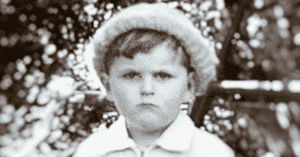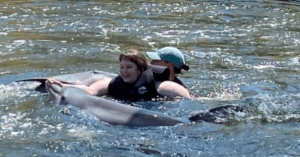Guest Authors: Sheng-Han Kuo MD, Chen-Ya Yang, MD, MPH, and Geraldine Yu, PT, DPT
Technical Support: Tiffany Chen BS, Johns Hopkins University
Ataxia is a neurologic disorder that affects people across all ages. People living with Ataxia may experience problems including incoordination of movement, slurred speech, poor balance, and gait abnormalities. Neuromotor exercises and physical therapy focusing on coordination and balance has been shown to improve or halt the progression of functional decline and are the mainstay treatments for Ataxia. The evidence has shown that balance training could improve the quality of walking as well as reduce the risk of falls. However, many patients may not be able to engage in supervised physical therapy due to various barriers. Therefore, Dr. Chen-Ya Yang, Geraldine Yu and I have created this web page which consists of video clips and instructions of various exercises of differing levels of challenge for patients with Ataxia. This can serve as a tool for healthcare professionals to help design home exercise programs and also be utilized as a guide for patients to follow along and exercise with at home.
-Sheng-Han Kuo, MDA
How to Use This Exercise Guide
Before you start using this home exercise resource, talk to a healthcare professional such as a neurologist, physical therapist or a physician to establish a realistic and achievable goal and ensure you are safe to perform these exercises.
Start with 2-3 exercises each session. For each exercise, do 8-10 repetitions, 2-3 sets in a controlled way. When the task becomes easy, increase the repetitions to 12-15 or add more exercises to your program. We would recommend a home program be performed at least 3 times per week, 20-30 mins for each session. Other strengthening exercises and endurance training such as walking or cycling should be continued along with this home exercise program.
Use the Ataxia Exercise Log (links to PDF) to record your progress and take it to your therapists so that they know how to adjust your exercise regimen accordingly.
Exercise #1 – Lying Bent Knee Rotations
Lying Bent Knee Rotations Description: This exercise focuses on segmental movement of the lower extremities and will aid in bed mobility and transfers. Lie facing up with both knees bent, hip width apart and feet flat; arms can be positioned out wide away from the body. Slowly begin to let both knees rotate from one side to the other. Try to keep your upper body and back flat as your lower body pivots from side to side. Perform this exercise slowly and smoothly for 10 repetitions.
Exercise #2 – Kneeling Press Up
Kneeling Press Up Description: This exercise will focus on lower extremity strength and stability. This will help in transitioning from the floor to standing. Start in an upright kneeling position with knees under hips and with arms at the side. Slowly and steadily move from a high kneeling position – hips straight body upright, to a low kneeling position – hips moving down to rest on heels. Slowly repeat moving from kneeling with hips on the heels to kneeling in an upright position. Use the strength of the hips and core to transition between these positions, perform 10 repetitions.
Kneeling Press Up Modification: Use a chair or steady surface to stabilize your hands onto. This can also serve to assist in the transition if one feels unsteady or weak.
Exercise #3 – Quadruped Weight Shifting
Quadruped Weight Shifting Description: This exercise will focus on progressive core stability in a kneeling position. This will assist in reaching and balancing in a less stable position. Start positioned in kneeling with hands under shoulders and knees under hips, spine is neutral. Slowly reach an arm forward to shoulder height, then begin to extend the opposite-side leg backwards to hip height. Balance for a moment before lowering both arm and leg to the ground. Repeat on the opposite side arm and leg. Perform this slow and steady without having the hips rock or the spine fall out of the neutral position. Attempt to complete 10 repetitions.
Quadruped Weight Shifting Modification: If it is difficult to come to full kneeling consider standing with hands on a table, chair, or other steady surface and rocking forwards and backwards. This will offload pressure from the wrists and kneels allowing for less weight in the transfer.
Exercise #4 – Quadruped Opposite Arm and Leg Extensions
Quadruped Opposite Arm and Leg Extensions Description: This exercise will focus on progressive core stability in a kneeling position. This will assist in reaching and balancing in a less stable position. Start positioned in kneeling with hands under shoulders and knees under hips, spine is neutral. Slowly reach an arm forward to shoulder height, then begin to extend the opposite-side leg backwards to hip height. Balance for a moment before lowering both arm and leg to the ground. Repeat on the opposite side arm and leg. Perform this slow and steady without having the hips rock or the spine fall out of the neutral position. Attempt to complete 10 repetitions.
Quadruped Opposite Arm and Leg Extensions Modification: Consider elevating only the arms, alternating from side to side. To increase the challenge, extend only the legs, alternating from side to side. When stability is achieved move onto coordinating both arm and opposite legs movements together.
Exercise #5 – Sit to Stand
Sit to Stand Description: This exercise focuses on lower extremity strength and balance during functional sit to stand. Sitting in a chair, position feet under knees, about hip width apart. Position entire body in the front half of the chair and upright, begin to shift upper body weight forward over the legs, as weight is being transferred into the feet, push up into a standing position using the strength of the leg muscles. Return to sitting in the chair and repeat for 10 repetitions. Do this slow and steady, try not to use the arms for support.
Sit to Stand Modification: To increase ease of performance consider elevating the surface the sit to stand is being performed from. A higher chair will be easier. Additionally, if further support and stability is needed consider stabilizing or pushing off the surface with either one or both hands.
Exercise #6 – Sitting Lateral Weight Shifts
Sitting Lateral Weight Shifts Description: This exercise will focus on core stability and balance in a seated position. Sitting upright on an exercise ball (more difficult) position the feet under knees and hip width apart. Slowly and smoothly begin to move the upper body to the right and then to the left, allow the weight of the trunk to fully shift from side to side. Perform 10 repetitions.
Sitting Lateral Weight Shifts Modification: Sit on a chair or steady surface to make this exercise easier. Consider placing hands on either side for additional support.
Exercise #7 – Standing Heel to Toe Balance
Standing Heel to Toe Balance Description: This exercise focuses on static standing balance with a narrow base of support. Standing upright position one foot in front of the other so the heel of the front foot is touching the toes of the back foot – as if standing on a tightrope. Try to stay steady in this position for increasing intervals of time e.g. 10 sec, 20 sec, 30 sec, etc. Rest and repeat this with the other leg positioned in front. If extra support is needed hold onto a stable surface.
Standing Heel to Toe Balance Modification: Hold onto a steady surface for additional support and balance if needed.
Exercise #8 – Standing Lateral Weight Shifts
Standing Lateral Weight Shifts Description: This exercise focuses on balance and is a precursor for side stepping and turning movements. In standing position feet hip width apart or wider. Slowly begin to shift entire weight laterally – moving hips, trunk, head and shoulders – onto one foot. Continue this shifting movement from one side to the other, perform 10 repetitions.
Standing Lateral Weight Shifts Modification: If extra support is needed hold onto a stable surface.
Exercise #9 – Standing Anterior-Posterior Weight Shift
Standing Anterior-Posterior Weight Shift Description: This exercise focuses on balance and is a precursor for walking. In standing, position feet hip width apart or wider. Slowly begin to shift entire weight forward into the toes and then shift entire weight backward into the heels. Continue this forward and backwards shifting movement, perform 10 repetitions.
Standing Anterior-Posterior Weight Shift Modification: If extra support is needed hold onto a stable surface.
Exercise #10 – Lateral Lunge
Lateral Lunge Description: This exercise targets lower extremity strength, core control, and balance. This will aid in bending, reaching, and transfer tasks. Start in standing with feet slightly wider than hip width apart. Begin to shift entire body weight backwards and laterally, shifting the hips and butt back towards one side – bending the knee on the weighted side while keeping the unweighted leg straight. Slowly straighten and shift back to the center, returning to a standing position. Repeat by shifting laterally to the other side, complete 10 total repetitions.
Lateral Lunge Modification: If extra support is needed hold onto a stable surface. Additionally, consider performing less of a shift and backwards squatting motion to limit the degree of weight shift and challenge.
Exercise #11 – Single Leg Stance
Single Leg Stance Description: This exercise targets balance with a narrow base of support and is functionally related to walking and transfers (e.g. in and out of a tub, etc.). Start by standing upright begin to shift weight onto one leg, lift the other leg off the ground without letting it rest against the standing leg. Try to balance on the standing leg for increasing intervals of time. Lower the lifted leg and repeat on the opposite side.
Single Leg Stance Modification: If extra support is needed hold onto a stable surface.
*DISCLAIMER*
Please consult with your primary care provider, neurologist, or other health care provider about any advice, exercise, or therapies that were mentioned in this article.
Meet the Authors

Sheng-Han Kuo, MD
Assistant Professor of Neurology
Columbia University Medical Center Director, Initiative for Columbia Ataxia and Tremor

Chen-Ya Yang, MD, MPH
Department of Neurology
Columbia University Medical Center

Geraldine Yu, PT, DPT
New York Presbyterian Hospital
Columbia University Medical Center















